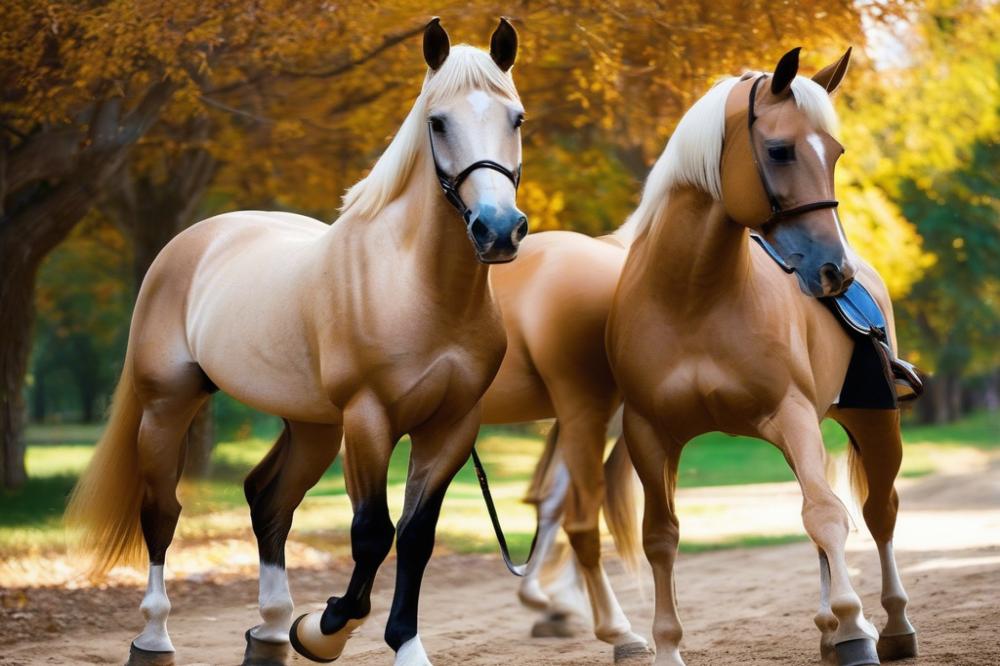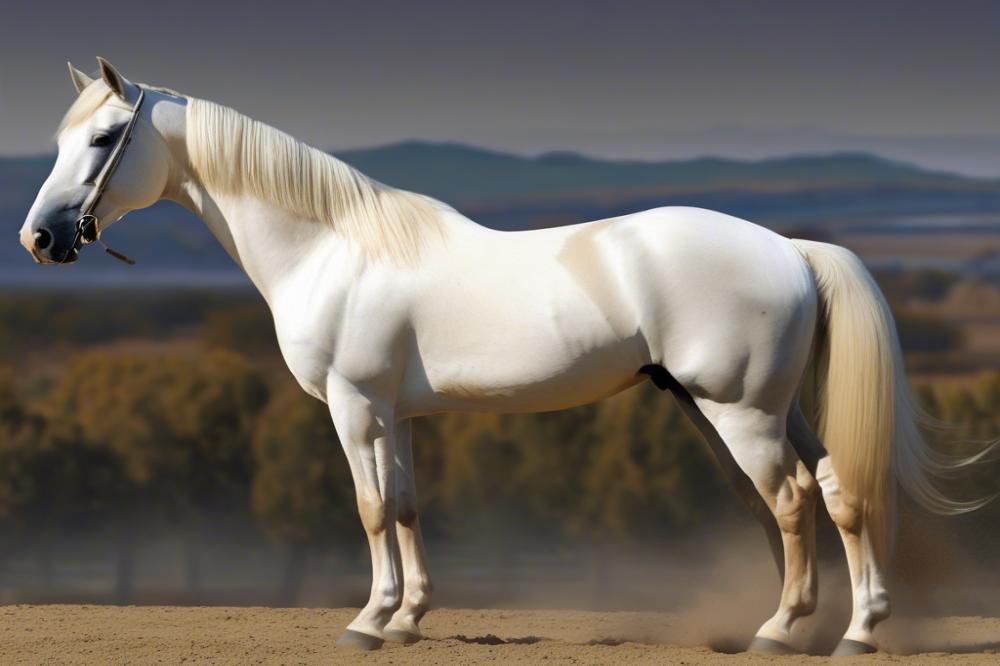Overview of Akhal-Teke Horses
Have you ever seen a horse that looks like it just stepped out of a painting? That’s the Akhal-Teke! These stunning creatures are known for their shimmering coats and long legs. Originating from Turkmenistan, this breed has a long history that dates back thousands of years. They are often recognized for their endurance and speed, making them perfect for both riding competitions and leisurely trail rides. With their slinky bodies and big personalities, riding an Akhal-Teke can feel like you’re a character in a classic Western movie.
Importance of Safety in Horse Riding
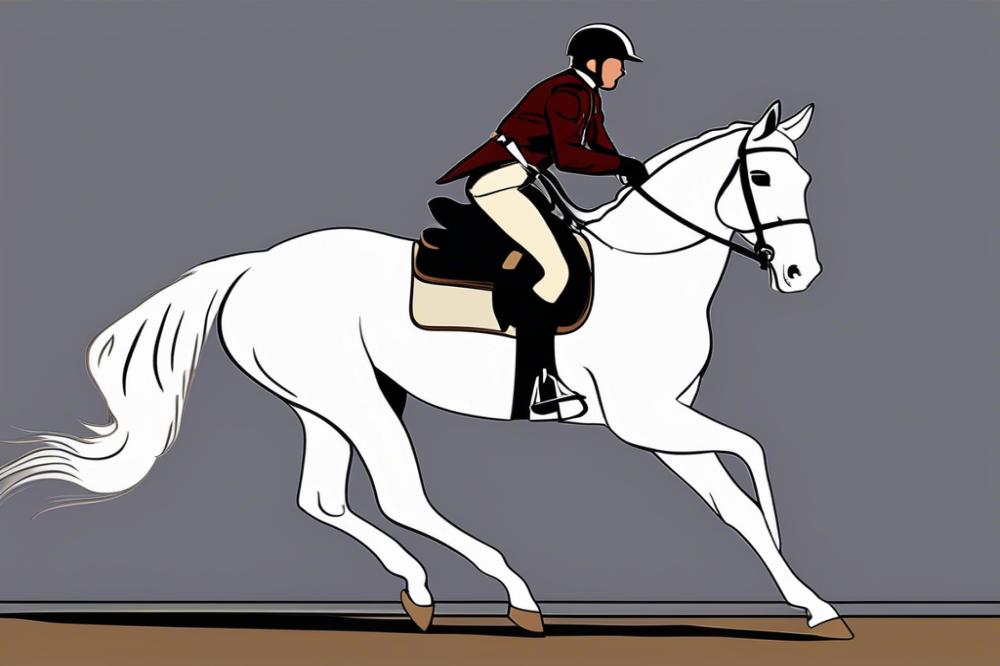
While it’s enchanting to ride such a magnificent animal, safety can never take a back seat. Imagine trying to ride a roller coaster without a safety strap. Riding any horse comes with its own risks, but the Akhal-Teke is especially spirited. They can be energetic, often requiring skilled horse training and a good understanding of equestrian techniques. A safe ride begins with knowledge and preparation. That’s where safety tips play a crucial role—to help riders protect themselves and their majestic steeds.
Purpose of This Riding Guide
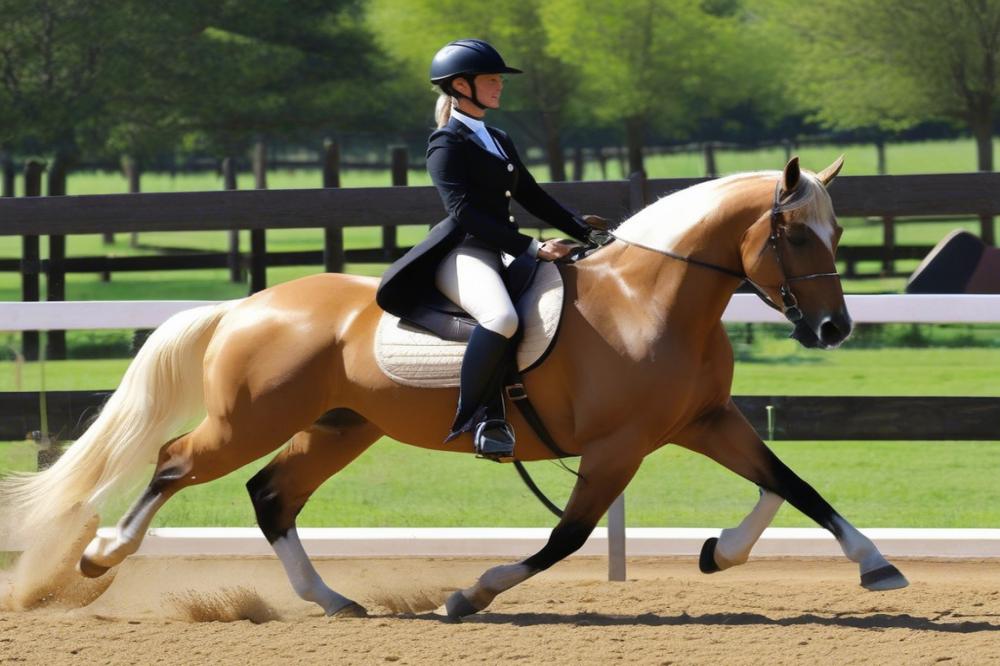
This guide is not just a collection of random tidbits; it’s a comprehensive resource crafted for anyone who wishes to ride an Akhal-Teke safely and effectively. Whether you’re a seasoned equestrian or a newcomer to the horse life, you’ll find something useful here. Expect practical advice on horse care, how to connect with your horse, and a few smiles along the way. We’ll take a stroll through the wonderful world of horse riding while ensuring you feel informed and confident.
Now that we’ve set the stage, let’s dive into the nuts and bolts of riding an Akhal-Teke. From understanding the branding of horses meaning to selecting the right horse life equipment, this adventure promises to enrich your riding experience and bond with your noble companion.
Understanding the Akhal-Teke Breed
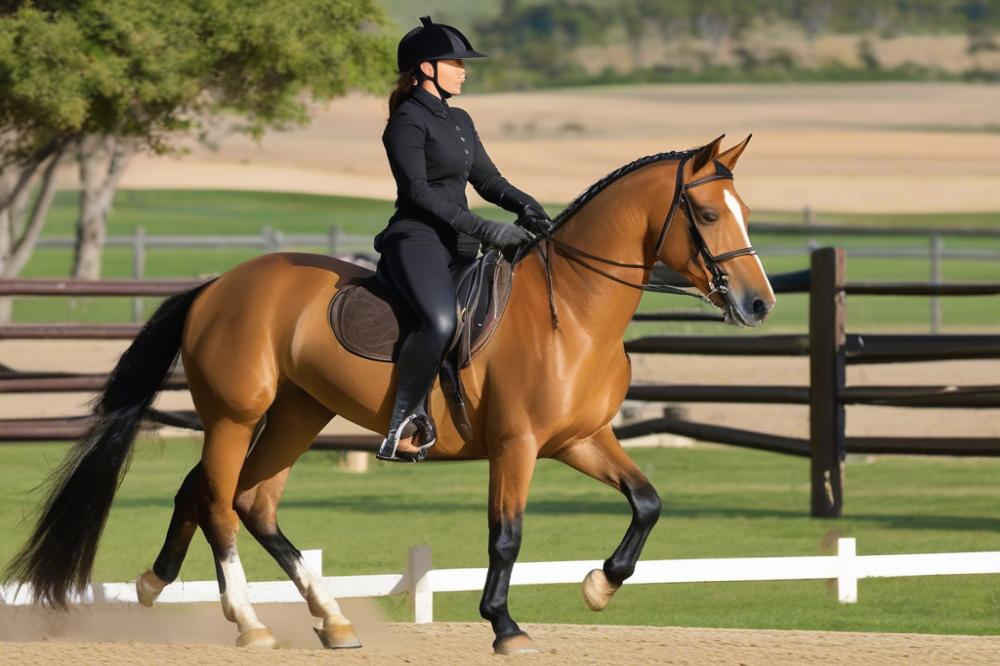
Origin and History of Akhal-Teke Horses
The Akhal-Teke horse has a fascinating history that dates back over 3,000 years. Originating from Turkmenistan, these horses were bred by the nomadic tribes of the area. They were prized for their endurance and speed, serving both as working horses and companions. In fact, they were so valued that they often traveled alongside their owners in long treks across deserts. Some say that the horse became a symbol of Turkmen culture, representing their strength and spirit.
These majestic creatures have seen many changes over the centuries. They’ve been involved in wars, racing, and even ceremonial events. With every twist and turn in their history, the Akhal-Teke horse has become a living legend in the equestrian world. Riders across the globe admire them for their resilience and unique beauty.
Distinctive Physical Features and Temperament
When you look at an Akhal-Teke, there’s no mistaking its elegance. You might first notice their shining coat, which often appears metallic. The colors can vary, but gold and bay are quite common. A sleek build helps them move with grace and agility. Their long neck and refined features make these horses truly stand out in a crowd.
Temperament-wise, don’t expect a horse that’s easily spooked. Akhal-Tekes are known for their calm demeanor and strong intelligence. This combination makes them responsive to horse training methods, especially when you employ effective equestrian techniques. A good rider will find that their trust fosters a lasting bond.
Comparison with Other Horse Breeds
When comparing Akhal-Tekes to other breeds, several key differences become apparent. For instance, Thoroughbreds are well-known for speed, while Arabs often have incredible endurance. Akhal-Tekes, however, strike a balance between both qualities. Their agility paired with stamina makes them great for various equestrian activities.
In addition, their unique coat and build might remind you of some Warmbloods, yet their spirit and temperament set them apart. While some breeds can be more temperamental, the Akhal-Teke generally thrives on companionship and routine. This loyal nature makes them a delight to ride and work with.
So, if you’re getting ready to saddle up for an adventure, knowing a bit about the breed can really help. With the right horse care and an understanding of how they think, you’ll be all set for a great ride. Taking the time to learn about their history and features will make your journey with an Akhal-Teke all the more enjoyable.
Preparing for a Ride
Assessing the Rider’s Skill Level
Before you hop on that stunning Akhal-Teke, take a moment to check in with yourself. How confident do you feel in your equestrian skills? If you can’t tell a trot from a gallop, it might be best to start slow. Riding, after all, isn’t just about looking good; it’s about being safe, too. Know your limitations. If you’re still mastering the basics, consider a more seasoned horse or a quiet trail ride.
Choosing the Right Equipment and Gear
Let’s talk gear. Not just any saddle will do! Comfort for both you and the horse is key. Properly fitted saddles, reins, and helmets are non-negotiable. If your gear doesn’t fit right, your ride could turn into a bumpy adventure—think of it like wearing shoes two sizes too small. A well-equipped rider is a happy rider. Always check those straps and buckles before heading out. Safety tips like these can save you a world of trouble.
Understanding the Horse’s Behavior and Needs
Next up, let’s consider the main character in this story: the horse. Each Akhal-Teke has its own personality. Some might be fiery, while others are laid back. Spend some time getting to know your horse. It’s a bit like meeting a new friend; you wouldn’t want to dive into a deep conversation without a bit of small talk first. Learn their body language. Ears back? That’s not a good sign! Remember, caring for your horse goes beyond just riding. This breed thrives on connection and understanding as much as they do on horse training sessions.
Safety Gear and Equipment
Importance of Wearing a Riding Helmet
Wearing a riding helmet is a no-brainer. Everyone knows that safety comes first when riding an Akhal-Teke horse. These horses are known for their energy and spirit. A helmet protects your head from unexpected falls or bumps. Think of it as your safety cocoon. You wouldn’t head into battle without a helmet, right? Make sure your helmet fits perfectly. It should sit snugly on your head without being uncomfortable. A good helmet can be the difference between a minor bump and a serious injury.
Description of Other Necessary Safety Gear
Helmets are just the beginning. Other safety gear is essential too. You’ll want to wear sturdy boots with a heel to prevent your feet from slipping through the stirrups. Wearing gloves can also improve your grip on the reins. This is especially helpful when you’re working on your equestrian skills. Protective vests might seem a little over the top, but they can buffer against falls. It’s all about feeling secure while enjoying your ride. When it comes to safety tips, always dress appropriately for the weather. A layer or two can make a huge difference in comfort and focus!
Selecting Appropriate Saddles and Tack for Akhal-Teke Horses
Choosing the right saddle can transform your riding experience. Akhal-Teke horses have a unique body structure, so you must find a saddle that fits them well. A proper fit ensures comfort for both you and your horse. Consider lightweight options that won’t hinder their movement. Tack should also be of high quality. It’s a good idea to check the condition of your equipment regularly. Worn-out tack can lead to accidents and might not help with horse care and training. As you select your equipment, remember that your riding guide should include an element of flexibility. Always be ready to adjust based on what your horse needs.
Pre-Ride Safety Checks
Checking the Horse’s Health and Soundness
Before you climb onto that beautiful Akhal-Teke, take a moment to check if your horse is feeling good. Look for signs like a shiny coat, clear eyes, and even breathing. Obviously, every horse has its quirks, so pay attention to any changes in behavior. A horse that isn’t acting like itself might need a little extra care. Check the legs too for any swelling or cuts. It’s like a mini check-up! Just imagine you going for a run with a twisted ankle; your horse deserves better. This step is all about keeping your ride safe and enjoyable.
Inspecting Tack and Equipment Before Riding
Next, let’s move on to the tack. Is your saddle nice and secure? Loose straps can lead to all kinds of trouble once you’re out on the trail. Don’t forget to adjust the girth! It should fit snugly but not too tight. Check your reins for frays. A snapped rein can ruin an otherwise great ride! Make sure the bit is clean and free of any debris. You wouldn’t want to ride with dirty gear, right? Trust those equestrian techniques you’ve learned. Getting this right helps everything run smoothly.
Understanding Weather and Terrain Conditions
Weather plays a huge role in your riding adventure. Before heading out, look at the forecast. Rain can make trails slippery, and it’s always wiser to ride when it’s sunny. Windy days can also spook some horses. Remember, every Akhal-Teke has its comfort zone. Know the terrain too. Rocky paths can be tough on horse hooves, so skip those if possible. A good riding guide always considers these factors. If it looks slippery or dangerous, it’s best to stay indoors. Safety tips work wonders when you keep an eye on the environment!
In-Saddle Safety Practices
Maintaining Proper Riding Posture and Balance
Riding an Akhal-Teke horse can feel like floating on a cloud—until you realize your posture is all wrong! Keeping a straight back is key. Imagine you have a string attached to the top of your head, gently pulling you upward. This keeps your center of gravity balanced. Feet should rest firmly in the stirrups, not flopping around like fish out of water. Remember, a stable rider makes for a calmer horse.
Be mindful of how your movements affect your horse. Sudden jerks or sways can confuse them. It’s like someone trying to dance beside you without any rhythm. Just as dancers work in sync, riders and horses must move together smoothly. As you develop your equestrian skills, practice controlling your balance. A good balance not only gives you confidence but also makes riding safer.
Communicating Effectively with the Horse
Did you know horses are excellent at reading our body language? They notice every little shift in our weight. If you lean too far forward, it might feel like your horse thinks they need to hurry up! Use gentle cues with your legs and hands to guide them. Think of your body as a soft map, showing your horse where to go without shouting.
A tap on the side could mean “let’s go” while a gentle squeeze can signal “slow down.” Every horse has their own personality. So, getting to know how your Akhal-Teke responds is essential. Try talking to them during rides, too. You might get surprising reactions!
Recognizing and Responding to the Horse’s Signals
Horses communicate through their ears, tails, and movements. Pay attention to the flick of an ear. It can tell you what they’re listening to or if they’re feeling alert. A swishing tail might signal irritation or even discomfort. Be observant and ready to adapt. Think of your horse as being in a conversation. Just like you’d want to respond to your friend, you must respond to your horse’s needs.
Emotional well-being counts too. If your horse seems restless or anxious, take a moment to assess the situation. A sudden jump can be a sign of fear or excitement. It’s important not to panic. Calm the horse with your voice and your hands. Remember, this is a partnership. Both rider and horse should feel safe and secure for a great experience.
When it comes to riding, safety tips are essential. Always wear a helmet and appropriate boots. It’s advice you hear all the time, but it’s given for a reason. Staying safe should never go out of style.
Emergency Preparedness
Identifying Potential Risks and Dangers While Riding
Keeping an eye out for trouble is key. Akhal-Teke horses might be spirited and can react unexpectedly. Look for obstacles in the path, like rocks or low branches, that could trip you and your horse. Other riders, pets, or even wildlife could startle your horse. Awareness can make all the difference. Riding in unfamiliar areas adds another layer of challenge. Always know where the nearest safe area is in case things don’t go as planned. Remember, even the most skilled equestrian can face surprises.
Basic First Aid for Horses and Riders
Knowing first aid is essential. If a rider falls, assess injuries right away. Can they move? Are they in serious pain? It’s important to stay calm and call for help if needed. For horse care, a basic first aid kit should include items like antiseptic wipes and bandages. If a horse scrapes its leg, clean the wound gently. Pain relief can sometimes be necessary for both horse and rider. Look out for swelling or limping, as these signs could mean trouble. Having a first aid manual can be a lifesaver.
Creating an Action Plan for Emergencies
Planning ahead gives confidence when riding. An action plan should outline steps to take if things go wrong. Decide a safe, designated spot where you can regroup after an incident. It could involve returning to the barn or a nearby area where help is nearby. Gather your riding friends and discuss how everyone should react during an emergency. One person can be responsible for calling for further assistance while others handle the situation. Practicing responses helps everyone feel prepared. With horse training, knowing your horse’s behavior can help you anticipate reactions during a panic.
Consider all these elements as part of a solid strategy. Keeping a detailed riding guide handy could offer quick reference tips. A little preparedness goes a long way toward making sure every ride is enjoyable and safe. After all, getting caught off guard can turn a delightful outing into a frightful experience. Always remember to communicate with your horse. Just like you wouldn’t ignore a friend shouting your name, paying attention to their needs is vital. Riding’s not just about skill; it’s about safety too!
Post-Ride Procedures
Caring for the Akhal-Teke Horse After Riding
After an exciting ride, your first task is to care for your Akhal-Teke. Start by checking for any signs of discomfort. These horses have sensitive skin, so brushing them gently is key. A good grooming session helps remove dirt and sweat, making them feel fresh and clean. Make sure to examine the hooves too. Look for stones lodged in the cracks or signs of wear.
Offering water is important. They might be thirsty after a hard workout. A few sips will help them rehydrate. If you use a saddle, be sure to remove it and check for any rubbing or soreness. Nothing ruins a future ride like discomfort from gear.
Lastly, let them chill for a bit. Spending time just hanging out can strengthen your bond. A little grazing time in a safe area keeps their spirits high. Remember, horse care is all about love and attention!
Evaluating the Ride Experience for Future Improvement
Reflection after a ride is crucial. Ask yourself what went well and what didn’t. Did you feel confident? Were there any tricky maneuvers that could improve with practice? Maybe you noticed your Akhal-Teke was anxious during certain moments. Keep those details in mind for next time.
Discuss your ride with fellow equestrians. Sharing experiences can give new insights. You might learn helpful equestrian techniques or tips you hadn’t thought of before. Try to address any problems right away. The sooner you tackle issues, the better your rides will become.
Think of your ride as a puzzle. Each session adds a new piece. Evaluating what fits and what doesn’t helps create the bigger picture of your training journey.
Keeping a Riding Log for Safety Tracking
Creating a riding log is like keeping a diary for your horse’s adventures. Write down details about each ride. Include the date, location, duration, and anything unusual that happened. This practice is beneficial for tracking progress and identifying patterns.
If your Akhal-Teke seems off or acts differently, you’ll find clues in your notes. Was it hot that day? Did you practice new equestrian skills? These insights help you understand your horse’s behavior in different settings.
Sharing your log with a trainer can also enhance your horse training. It focuses on highlighting areas that need improvement. Think of it as a roadmap guiding you both on the path to success. Remember, every great journey begins with a single step—or in this case, a well-kept log!
Wrapping It Up: Riding Safely on an Akhal-Teke Horse
Let’s take a moment to recap some key safety practices for riding Akhal-Teke horses. First off, always wear your helmet. It might not be the fanciest accessory, but it can be a lifesaver. Riding boots are a must as well; those stirrups are more forgiving to your feet than your regular sneakers. Also, don’t forget to check the gear. Tack that doesn’t fit properly can make even the calmest horse act like a rodeo bull!
Communication is key, both with your horse and your trainer. It’s not just about issuing commands; it’s about understanding what your horse is telling you too. Akhal-Tekes can be quite expressive, and reading their body language can help you avoid potential issues. Just like people, they have moods that can swing from happy-go-lucky to a bit grumpy. Think of it like a friendly chat; sometimes you have to listen more than you speak. And speaking of moods, keep your calm. If you’re nervous, your horse will pick up on that and may feel anxious as well.
Ride Responsibly and Have Fun
Each ride is an opportunity to bond with your horse. Never rush your training or the relationship you’re building. It’s not about how quickly you can go from novice to expert; it’s about enjoying the journey. Remember that a well-trained Akhal-Teke is a joy to ride, but they are still animals with their instincts. They may exhibit a bit of that ‘donkey vs horse strength’ when they choose to be stubborn—so respect their quirks!
Moreover, keeping safe means being aware of your surroundings. Riding in an area free of distractions—like folks diving into the barn for apples or kids racing around—is best. You want to avoid situations where your glorious ride turns into an unexpected rodeo experience! And hey, if you’re going out for a trail ride, using a horse GPS tracker can be a smart move. You’ll never know when a shortcut might turn into an unplanned exploration adventure!
Final Thoughts: Enjoy the Ride
In closing, riding an Akhal-Teke is truly a one-of-a-kind experience. It’s like dancing with a partner that wants to impress you as much as you want to impress them. Always prioritize safety, respect your horse, and have a good time. Prepare yourself for the feelings of freedom and excitement. Those moments in the saddle, with the wind in your hair, can make you feel alive! So, saddle up, enjoy your rides, and create beautiful memories with your magnificent Akhal-Teke—it’s all part of the adventure!

